“One of the best places in the world”, says Sara Hector, elite alpine skier, after her days in Storklinten. During an intense autumn, much of the world’s alpine elite gathers here. This year’s figures are at least 4600 guest nights in November, spread over up to 400 beds. Join us and take the pulse of one of Norrbotten’s most popular places right now.
Above the snow-covered forest, a great light appears in the darkness of the night about 30 minutes drive from Boden. A UFO? Northern lights? No, it’s Storklinten’s 24-hour workshop and absolute high season that lights up the autumn darkness. The last brave ones have just left the night work on the slopes when the first restaurant staff slip in to fix breakfast. On the slopes, a strict schedule runs from 07.30 to 16. The restaurant is open until late in the evening. In between, there is training in the gym, running in the surroundings, table tennis matches, analyzing videos from training sessions, some people squeeze in one more training session on the slopes.
“I have been here many times but I must say that this year it is exceptionally good. The hill has a perfect slope, it’s a quick turnaround time and very easy to train here. The conditions in Storklinten are better now than some race conditions, one of the best places in the world. I really found my form here for Levi,” says Sara Hector.
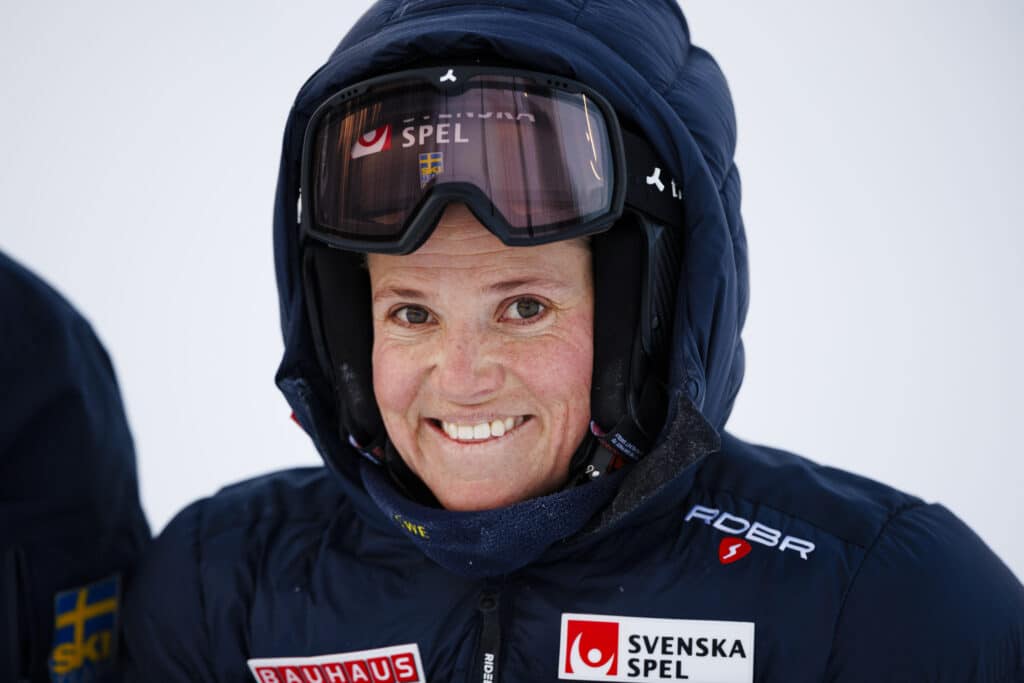 Sara Hector finished in fourth place and matched her personal best in the women’s World Cup opener in Levi. She set the form in Storklinten, and came back again for another round of training with a view to the USA. Photo: Fotographic
Sara Hector finished in fourth place and matched her personal best in the women’s World Cup opener in Levi. She set the form in Storklinten, and came back again for another round of training with a view to the USA. Photo: Fotographic
In total, teams from around 20 nations come here from the end of October to the beginning of December, including national teams, clubs and schools with an alpine focus. Here the skiers come together as one big family and then converge again as competitors in the world.
Creating the best conditions for the important alpine pre-season training has become Storklinten’s niche and strength before the rest of us happy amateurs go out into what has been Boden’s home slopes for several decades. In recent years, the eyes of the whole world have started to turn here and the Swedish national team uses Storklinten as a base for their pre-season training.
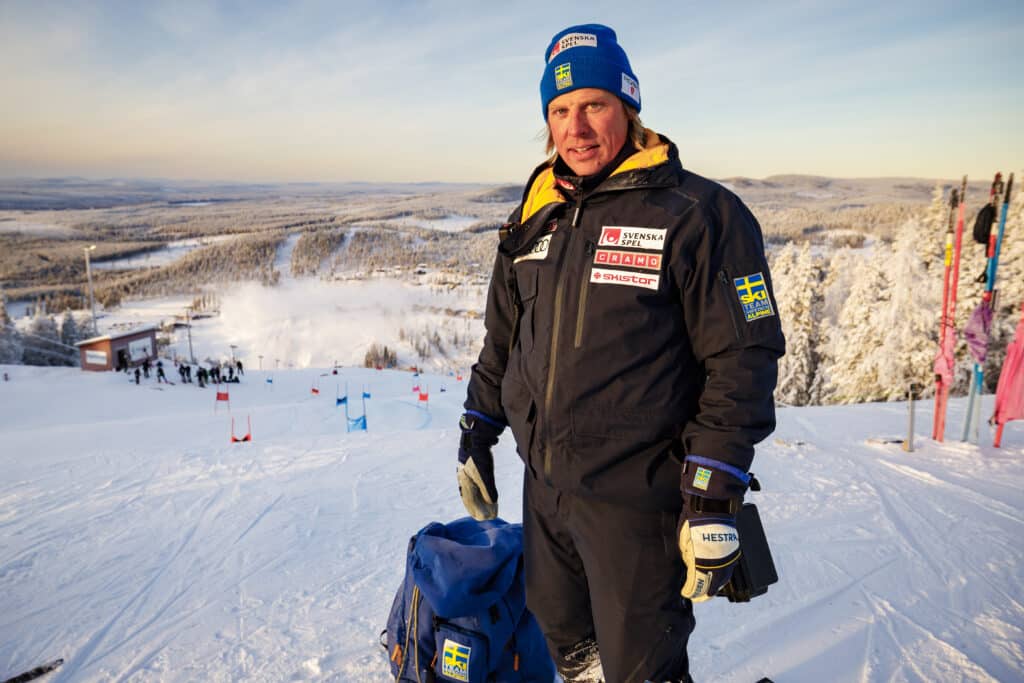 – Det är fjärde året vi är här. För oss är det unikt att anläggningen väljer att ha bara tävlingsåkare under den här perioden och ger 100 procent support, säger Fredrik Kingstad, herrchef i svenska landslaget.
– Det är fjärde året vi är här. För oss är det unikt att anläggningen väljer att ha bara tävlingsåkare under den här perioden och ger 100 procent support, säger Fredrik Kingstad, herrchef i svenska landslaget.
Recipes for success
Storklinten’s success factors are several. The big magnet is how they are packaged. Understanding and knowledge of the sport, responsiveness, ability and willingness to prepare the tracks is a basic requirement. Access to snow is another. It is created by an efficient snowmaking system and saving snow from the spring as a basis for the early fall season. This year, nature was also on the side of the snowmakers, providing temperatures that allowed for early and sustained production of the snow that was left behind.
“Närhetsliv”
Here in Boden, we usually talk about our “närhetsliv”, a life where you are close to everything that matters, and more. And once in place, it is precisely the proximity and simplicity that everyone raises when we visit the facility and take the pulse of riders, coaches and other employees. They leave Europe’s Alps and major ski resorts around the world to live close to the slopes of Storklinten, without the time- and energy-consuming transportation and lift queues. Here they eat, train and sleep just minutes away from world-class slopes.
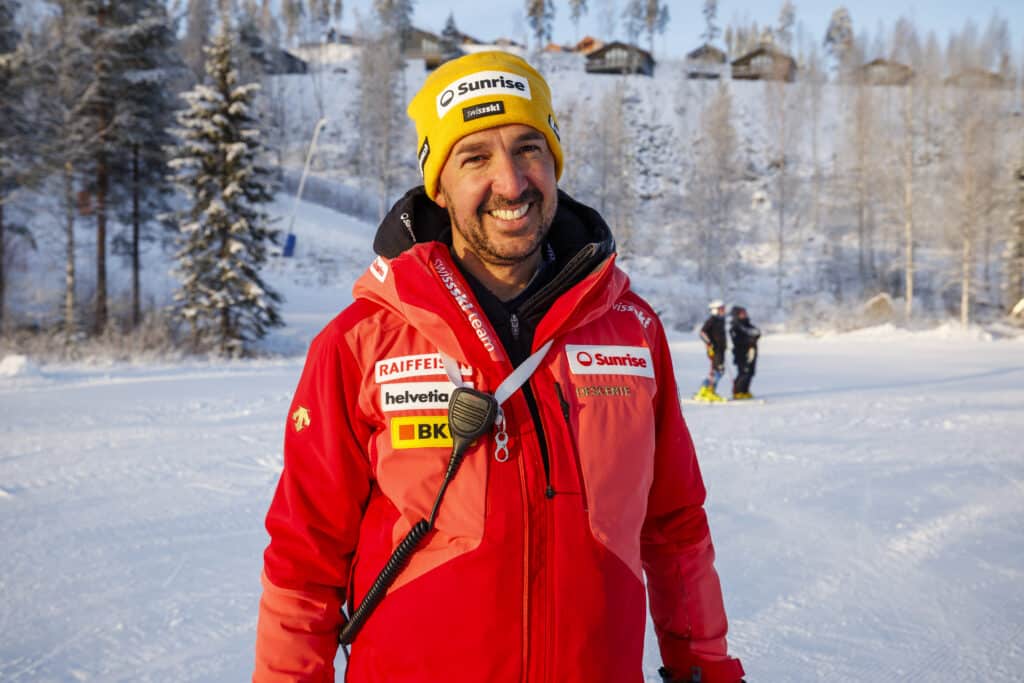 Heini Pfitscher, elite group coach for Switzerland ladies.
Heini Pfitscher, elite group coach for Switzerland ladies.
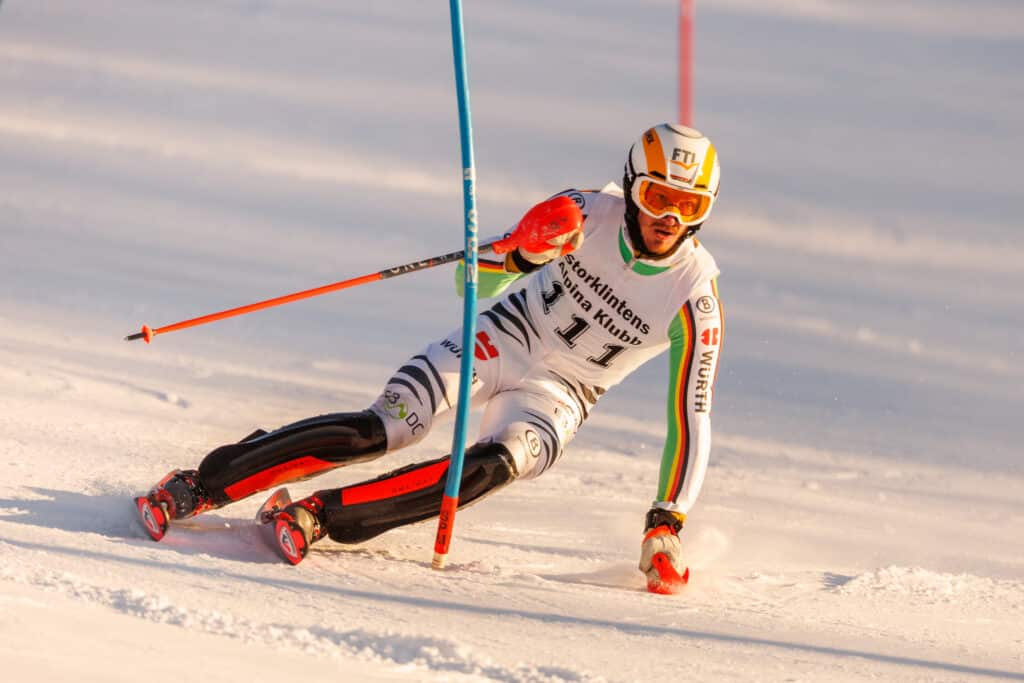 German elite skier Linus Strasser on the slopes of Storklinten.
German elite skier Linus Strasser on the slopes of Storklinten.
“Our experience here is very good. We are 21 people from the Swiss team. Here the slopes are always perfect and it is so easy to organize good training here. And accommodation, slopes and everything is close by”, sums up Heini Pfitscher, elite group coach of the Swiss women.
From Germany, a total of up to 70 people have come and gone here in November, from all German competition teams. Bernd Brunner, coach of the German men, confirms Heini’s description and adds the good cooperation between different countries.
“The Swedish team helps us a lot. What we get here, we give back when they come to us”, he says.
Many functions
Each team carries a staff of personnel, far more than those we see on the slopes. All teams and some athletes have their own personal marshals with their own order, planning and a bit of secrecy. For this, Storklinten has set aside 56 separate places.
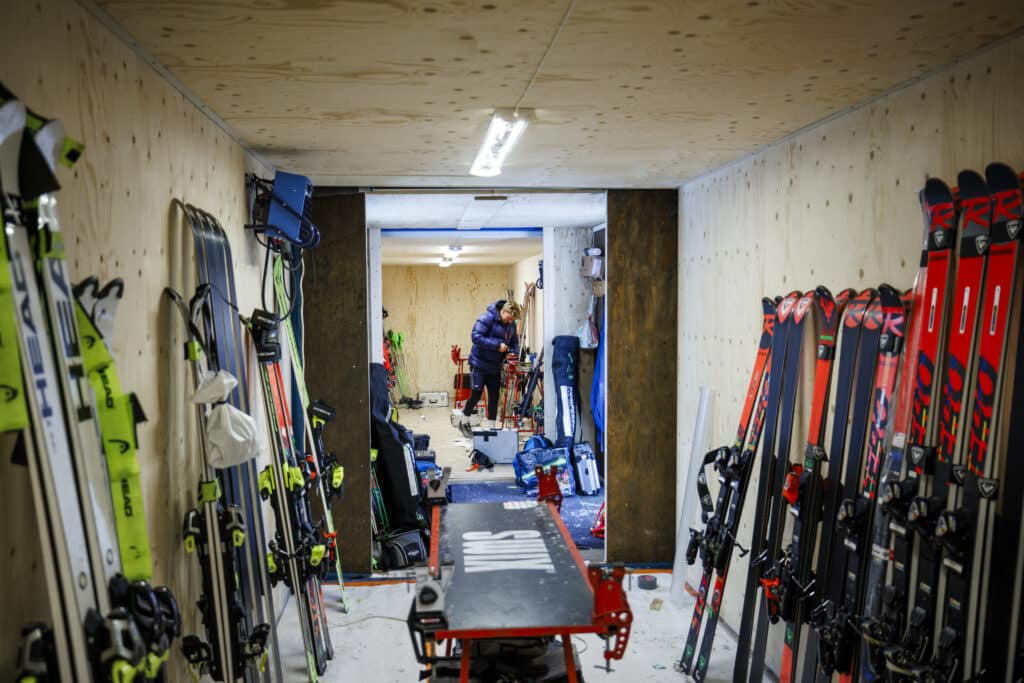 For the secret corners of the polling booths there are 56 places in Storklinten.
For the secret corners of the polling booths there are 56 places in Storklinten.
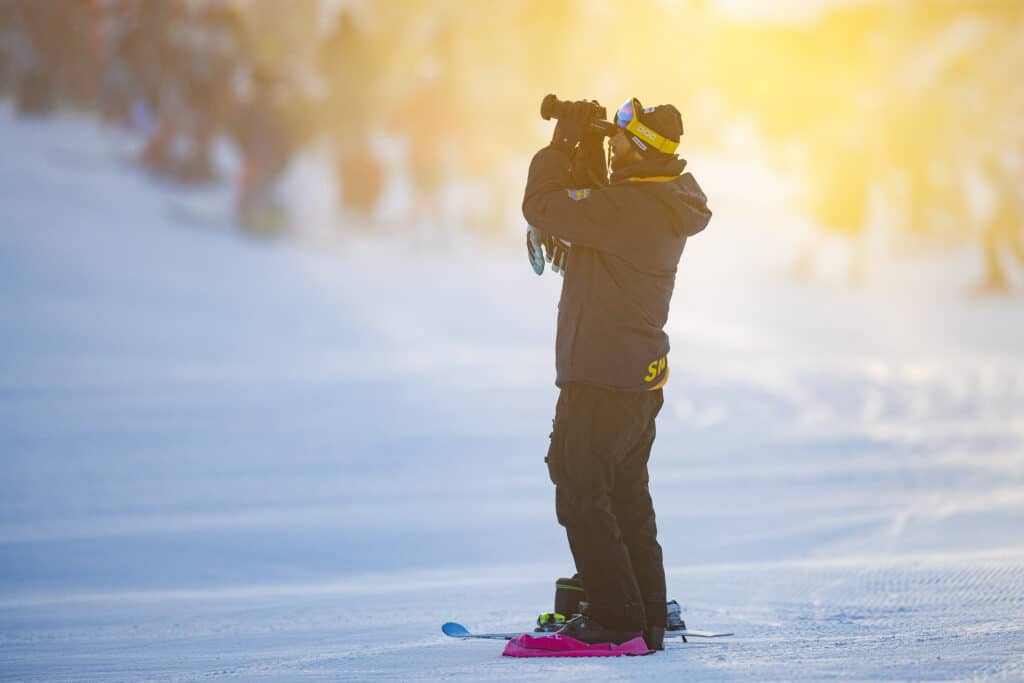 The rides are filmed and analyzed between training sessions.
The rides are filmed and analyzed between training sessions.
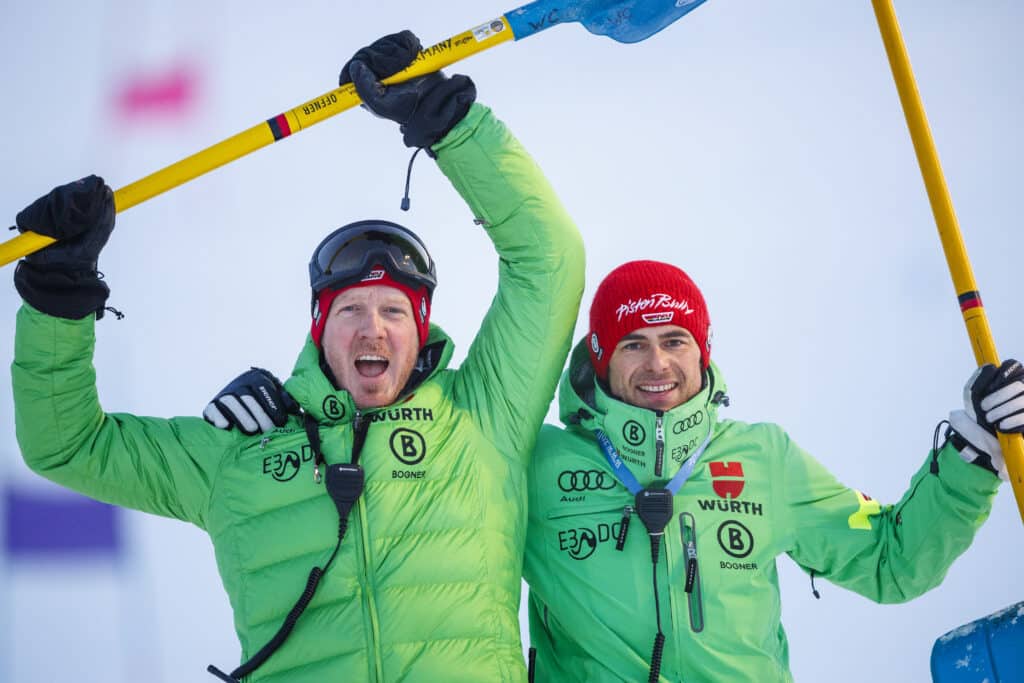 Germany’s Stefan Kogler and Phillip Schmid, ready with the shovels.
Germany’s Stefan Kogler and Phillip Schmid, ready with the shovels.
Every evening, all the coaches gather in the Storklinten restaurant and go through tomorrow’s schedule, times for the different teams and nations and agree on how they want the courts. Then the countries’ coaches work together during the evening and night to prepare the slopes according to plans and temperature, with the support of Storklinten’s staff and technology. To service the process, Storklinten has scheduled night work.
Towards the top
Among the hot Swedish names that have trimmed their form recently, in addition to Sara Hector, can be mentioned Boden’s own Kristoffer Jakobsen. He has kept this as his home hill throughout the years. Now he has to share it with some of his competitors.
“Yes, it was nice when Myhrer and I had the hill to ourselves”, he laughs. But he adds that it is of course great that so many people come here, that they can meet here across national borders, and also look at each other’s strengths and weaknesses.
“I can actually use it in competition,” he says with a twinkle in his eye.
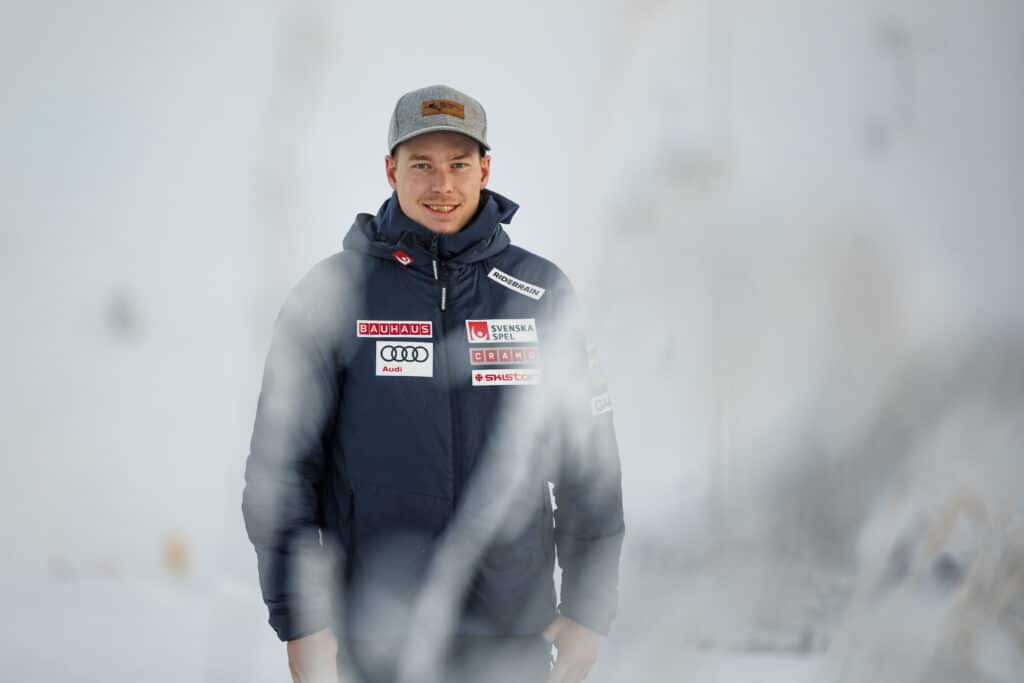 Kristoffer Jakobsen from Boden is fighting in the absolute world elite and is now sharing his home slope Storklinten with competitors from all over the world during the preseason.
Kristoffer Jakobsen from Boden is fighting in the absolute world elite and is now sharing his home slope Storklinten with competitors from all over the world during the preseason.
Chances are we will also see some of this fall’s visitors as this winter’s rising stars in future competitions. One of several promising names is Cornelia Öhlund, who is in the women’s national team for the second year.
“I have been here for three weeks now. This is our prep-precamp for the USA on November 25-26. We are a tight team and to live like this, together, and be able to get on skis outside the door, it’s perfect. We save a lot of time by having everything like this,” she says.
In the video Cornelia Öhlund talks about Storklinten as the place to be to get ready for next season.
Open to the public
On December 2, Storklinten opens to the public and the season becomes a more normal winter season. In the meantime, the slopes are being groomed to be softer than the demands of the racers. A number of exciting events can be expected, both during the opening weekend and throughout the season.
Read more about Storklinten’s climate-smart skiing HERE.
Photo: Mats Engfors, Fotographic. Film: KOMM/Municipality of Boden